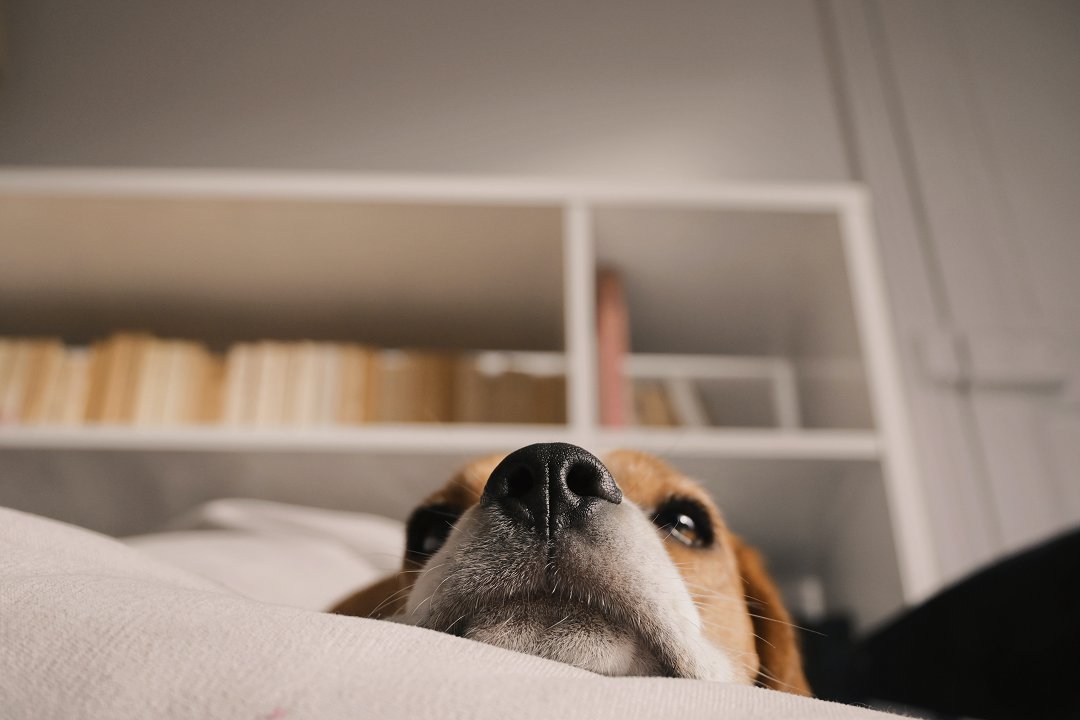Table of Contents
- 1 Introduction: The Importance of Understanding Beagle Litter Sizes
- 2 Breeding Beagles: Factors Affecting Average Litter Size
- 3 Tips for Caring for a Beagle Litter: Size Matters
- 4 FAQs About: Average Beagle Litter Size
- 4.1 How many puppies can I expect in a typical Beagle litter?
- 4.2 Are there any factors that can influence the size of a Beagle litter?
- 4.3 Can Beagle breeders predict the size of a litter before breeding?
- 4.4 How should I care for a Beagle mother and her litter of puppies?
- 4.5 Is it normal for Beagle puppies to have different colors in the same litter?
- 4.6 What should I do if a Beagle litter is larger or smaller than average?
Introduction: The Importance of Understanding Beagle Litter Sizes
Are you considering getting a Beagle as a pet? Or perhaps you’re already a proud Beagle owner and want to expand your furry family? Either way, it’s crucial to understand the average Beagle litter size. Knowing this information can help you prepare for the arrival of adorable Beagle puppies and ensure their well-being. In this article, we’ll explore the factors that affect the average litter size of Beagles and provide you with essential tips for caring for a Beagle litter. So, let’s dive into the fascinating world of Beagle reproduction and discover why size truly matters.
Understanding the average Beagle litter size is essential because it can vary depending on several factors. Factors such as the age of the female Beagle, her overall health, and the quality of the breeding process can all play a role in determining litter size. By delving deeper into these factors in the next section, we can gain a better understanding of what influences the size of a Beagle litter. So, let’s explore the fascinating world of Beagle breeding and uncover the secrets behind average Beagle litter sizes.
Breeding Beagles: Factors Affecting Average Litter Size
When it comes to breeding Beagles, understanding the factors that can affect the average litter size is crucial. By being aware of these factors, breeders can make informed decisions and take appropriate steps to maximize the chances of a healthy and successful litter. Let’s explore some of the key factors that can influence the size of a Beagle litter:
1. Age of the Beagle
The age of the female Beagle plays a significant role in determining the average litter size. Generally, younger Beagles tend to have smaller litters, while older ones may have larger ones. This is because as Beagles age, their reproductive systems become more efficient, leading to increased fertility and larger litter sizes.
2. Health and Genetics
The overall health and genetics of the Beagle also impact the average litter size. Beagles with underlying health issues or genetic abnormalities may have smaller litters. It’s important for breeders to ensure that both the male and female Beagles are in good health and free from any hereditary conditions that could affect litter size.
3. Nutrition and Care
Proper nutrition and care are vital during the breeding process. A well-balanced diet that meets the nutritional needs of the Beagle is essential for optimal reproductive health. Providing the necessary vitamins, minerals, and supplements can help improve fertility and increase the chances of larger litter sizes.
4. Timing of Breeding
The timing of breeding also plays a role in the average litter size. Beagles have a specific ovulation period, and mating during this time increases the chances of a successful pregnancy. By tracking the female Beagle’s heat cycle and determining the optimal time for breeding, breeders can maximize the chances of a larger litter.
5. Breeding Techniques
The breeding techniques employed by breeders can also affect the average litter size. Artificial insemination and other assisted reproductive technologies can be used to increase the chances of a successful pregnancy and potentially larger litter sizes.
Understanding these factors and taking appropriate measures can significantly impact the average litter size in Beagles. By considering the age of the Beagle, ensuring good health and genetics, providing proper nutrition and care, timing the breeding correctly, and utilizing appropriate breeding techniques, breeders can increase the likelihood of larger and healthier litters.
In the next section, we will explore essential tips for caring for a Beagle litter, with a specific focus on how litter size can affect the care requirements.
Tips for Caring for a Beagle Litter: Size Matters
When it comes to caring for a beagle litter, understanding the average beagle litter size is crucial. This knowledge will help you prepare adequately and provide the best care for the puppies and their mother. Here are some tips to consider:
1. Prepare a Suitable Whelping Area
Before the puppies arrive, it’s important to create a safe and comfortable whelping area for the mother beagle. This area should be warm, quiet, and free from any potential hazards. You can use a whelping box with low sides to prevent the puppies from wandering off too soon.
2. Monitor the Puppies’ Weight Gain
Keeping a close eye on the puppies’ weight gain is essential for their overall health and development. Puppies should gain weight steadily in their first few weeks of life. If you notice any puppies not gaining weight or falling behind, it may be a sign of a health issue that requires veterinary attention.
3. Provide Proper Nutrition
The mother beagle needs a nutritious diet to support her own health and the growth of her puppies. Consult with your veterinarian to ensure you are feeding her a balanced diet that meets her specific needs during pregnancy and lactation. Additionally, as the puppies grow, they will gradually transition from their mother’s milk to solid food. Introduce a high-quality puppy food that is appropriate for their age and size.
4. Socialization and Early Training
As the puppies grow, it’s important to expose them to various sights, sounds, and experiences to help with their socialization. This will contribute to their overall well-being and make them more adaptable to new environments and situations. Additionally, early training should begin around 8 weeks of age to establish good behavior and obedience habits.
5. Vaccinations and Veterinary Care
Regular veterinary check-ups and vaccinations are essential for the health and well-being of the puppies. Consult with your veterinarian to establish a vaccination schedule and ensure the puppies receive necessary preventive care. This will help protect them from common diseases and parasites.
6. Finding Suitable Homes
When the time comes to find suitable homes for the puppies, it’s important to thoroughly screen potential adopters. Ensure they have a suitable living environment and the knowledge and commitment to care for a beagle. Consider asking for references or conducting home visits to ensure the puppies will be well-cared for.
By following these tips and understanding the average beagle litter size, you can provide the best care for the puppies and their mother. Remember, each litter is unique, and it’s important to tailor your care to the specific needs of the individual puppies.
FAQs About: Average Beagle Litter Size
How many puppies can I expect in a typical Beagle litter?
On average, a Beagle litter consists of around 6 puppies. However, litter sizes can vary and range anywhere from 1 to 10 puppies.
Are there any factors that can influence the size of a Beagle litter?
Yes, several factors can affect the average litter size of Beagles. These include the age and health of the mother Beagle, the quality of breeding, and genetic factors.
Can Beagle breeders predict the size of a litter before breeding?
While Beagle breeders cannot accurately predict the exact number of puppies in a litter, they can estimate based on the mother’s previous litters and her overall health and condition.
How should I care for a Beagle mother and her litter of puppies?
Provide a clean and comfortable whelping area for the Beagle mother and her puppies. Ensure she has a nutritious diet and access to fresh water. Regularly monitor the puppies’ health and consult a veterinarian for guidance.
Is it normal for Beagle puppies to have different colors in the same litter?
Yes, Beagles can have a variety of colors and markings, and it is quite common for puppies within the same litter to have different coat colors and patterns.
What should I do if a Beagle litter is larger or smaller than average?
If a Beagle litter is larger than average, it is essential to provide extra care and attention to ensure all puppies receive adequate nutrition and care. If the litter is smaller than average, consult a veterinarian to ensure the health and well-being of the puppies and mother.






Leave a Reply